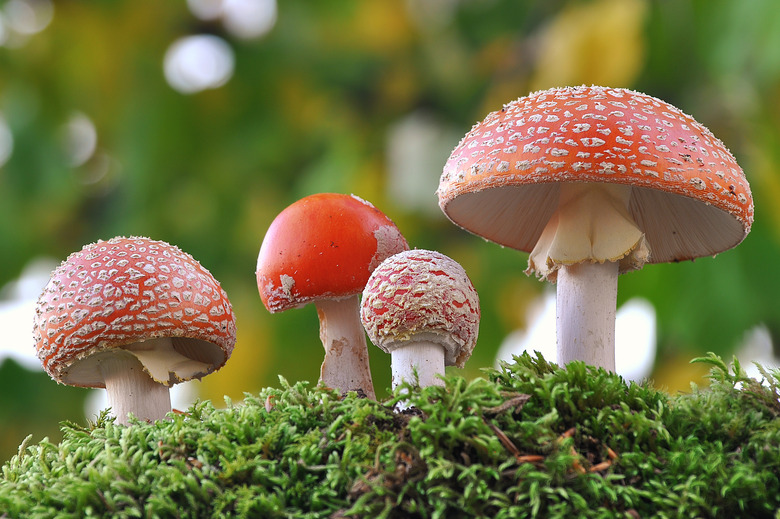How Are Fungi & Plants Similar?
Fungi are living organisms that are classified by biologists as distinct from plants and animals. However, many types of fungi — especially familiar one like mushrooms that sprout from the soil — share several characteristics in common with plants. These include cell structure, the presence of root-like structures, interactions with other living matter and patterns of growth and movement.
TL;DR (Too Long; Didn't Read)
Fungi are not plants, but can resemble them rather closely, especially mushrooms that grow in the same environments and under similar conditions as plants.
Origins
Origins
Both plants and fungi evolved from eukaryotic single-celled organisms called "protists," which make up the kingdom Protista. Eukaryotes are complex cells that have genetic material, such as DNA, found in a membrane-bound nucleus. Plants, animals and fungi are all made up of eukaryotic cells. With the exception of yeasts, most fungi are multi-cellular organisms, and all plants are also multi-cellular. (Algae and phytoplankton are photosynthetic protists.)
Cell Structure
Cell Structure
Since plants and fungi are both derived from protists, they share similar cell structures. Unlike animal cells, both plant and fungal cells are enclosed by a cell wall. As eukaryotes, both fungi and plants have membrane-bound nuclei, which contain DNA condensed with the help of histone proteins. They both also have organelles, including mitochondria, endoplasmic reticula and Golgi apparatuses, inside their cells.
Relationships
Relationships
Both plants and fungi engage in relationships with other organisms; some of these interactions are beneficial to both organisms, while others are parasitic. In parasitic relationships, plants or fungi steal resources from other organisms. The fungi Armillaria can feed off of living trees, causing the wood to decay. Other relationships are mutually beneficial. The symbiotic relationship called "mycorrhiza" involves fungi living on plant roots; the fungi protect the plant and help it take up nutrients from the soil, and in return the fungi receive sugar from the plant.
Mobility
Mobility
On the outside, plants and fungi look similar. The flowering bodies of both types of organisms don't move. Fungi can grow in a variety of places, including soil, animal bodies, water or plants. When most people think of fungi they think of common mushrooms, which look similar to plants growing out of the soil. In addition, fungal "hyphae," which are long, thread-like structures, resemble the roots of plants.
References
Cite This Article
MLA
Batema, Cara. "How Are Fungi & Plants Similar?" sciencing.com, https://www.sciencing.com/fungi-plants-similar-5145346/. 25 April 2018.
APA
Batema, Cara. (2018, April 25). How Are Fungi & Plants Similar?. sciencing.com. Retrieved from https://www.sciencing.com/fungi-plants-similar-5145346/
Chicago
Batema, Cara. How Are Fungi & Plants Similar? last modified March 24, 2022. https://www.sciencing.com/fungi-plants-similar-5145346/
